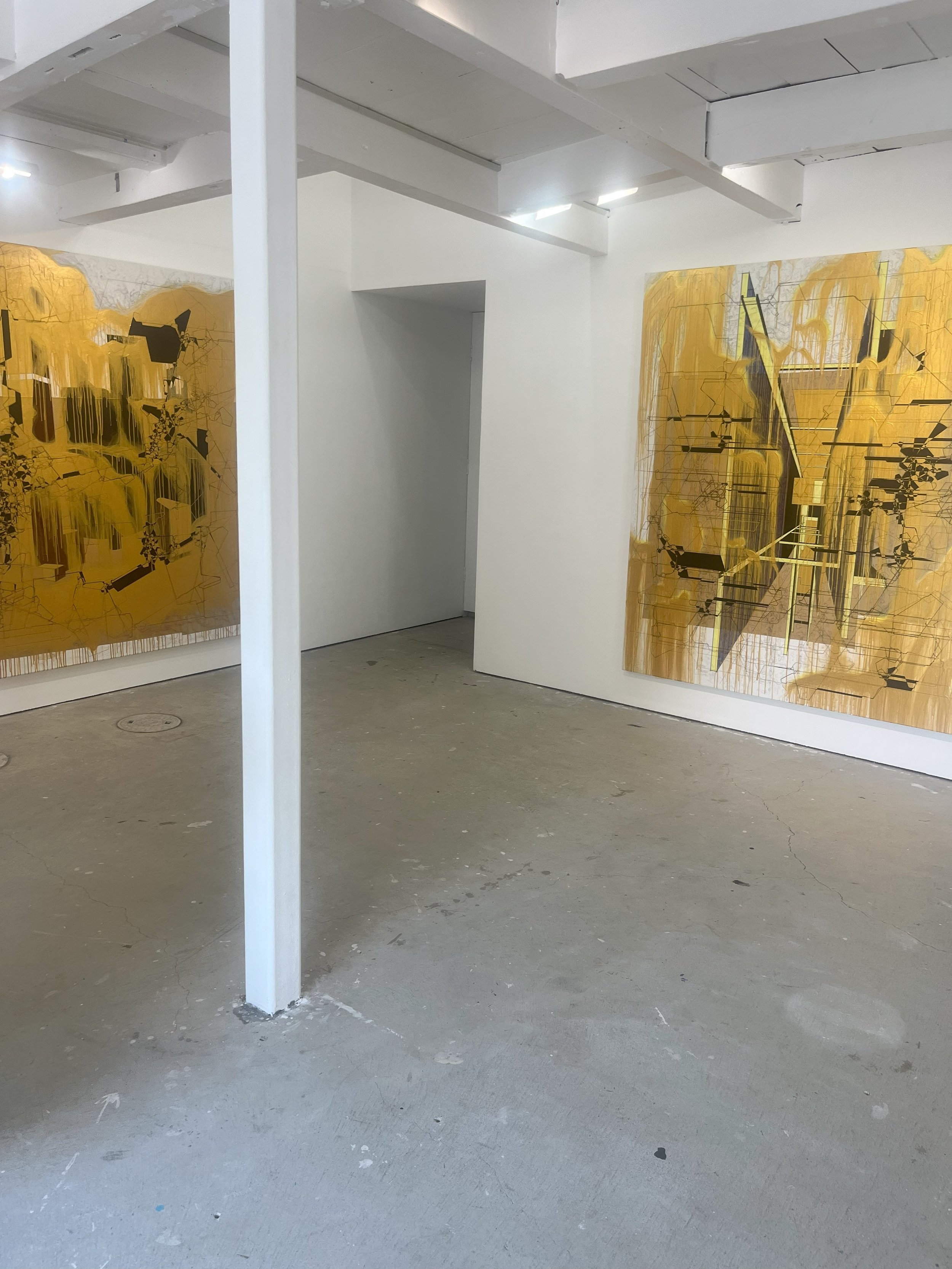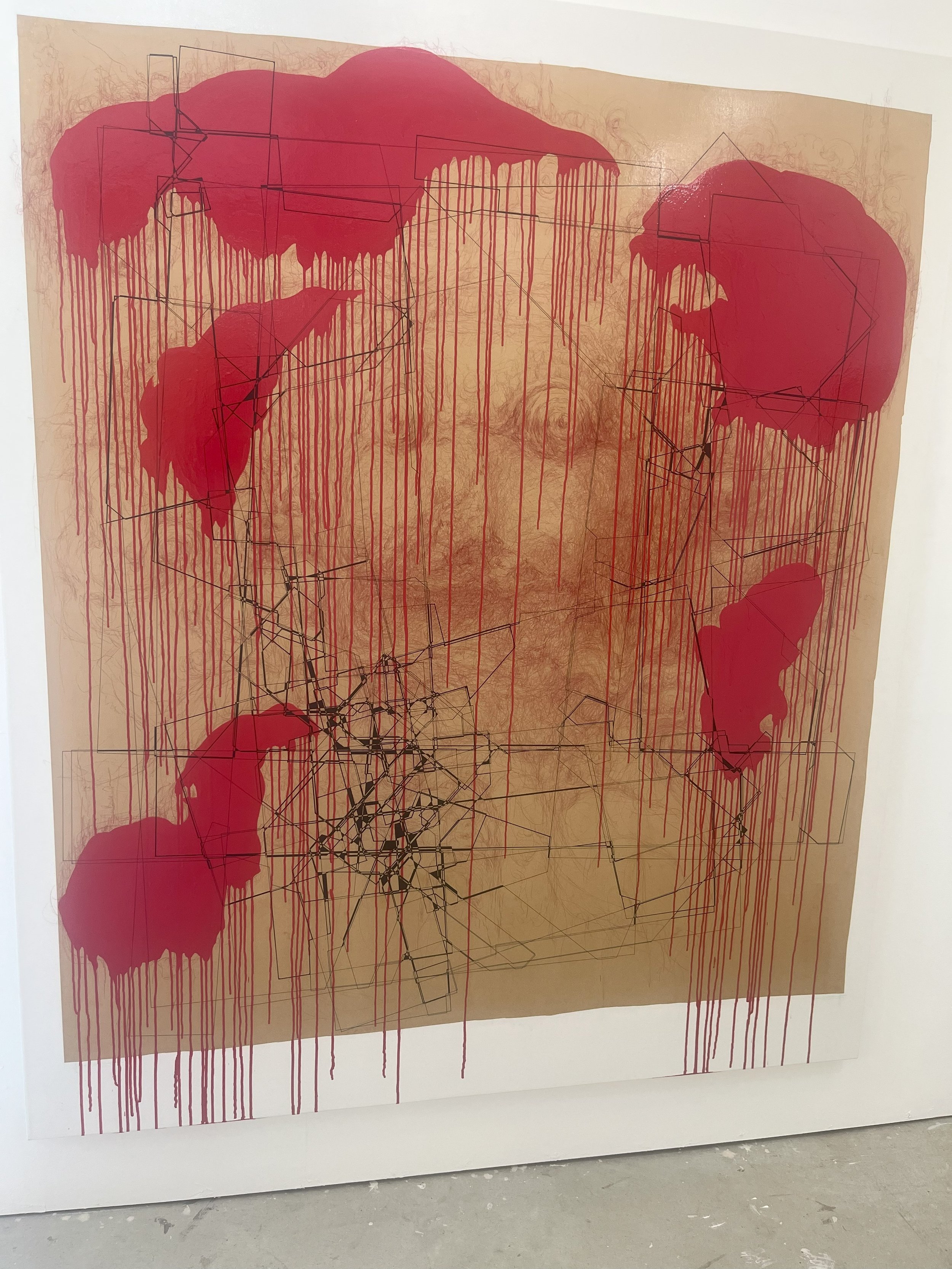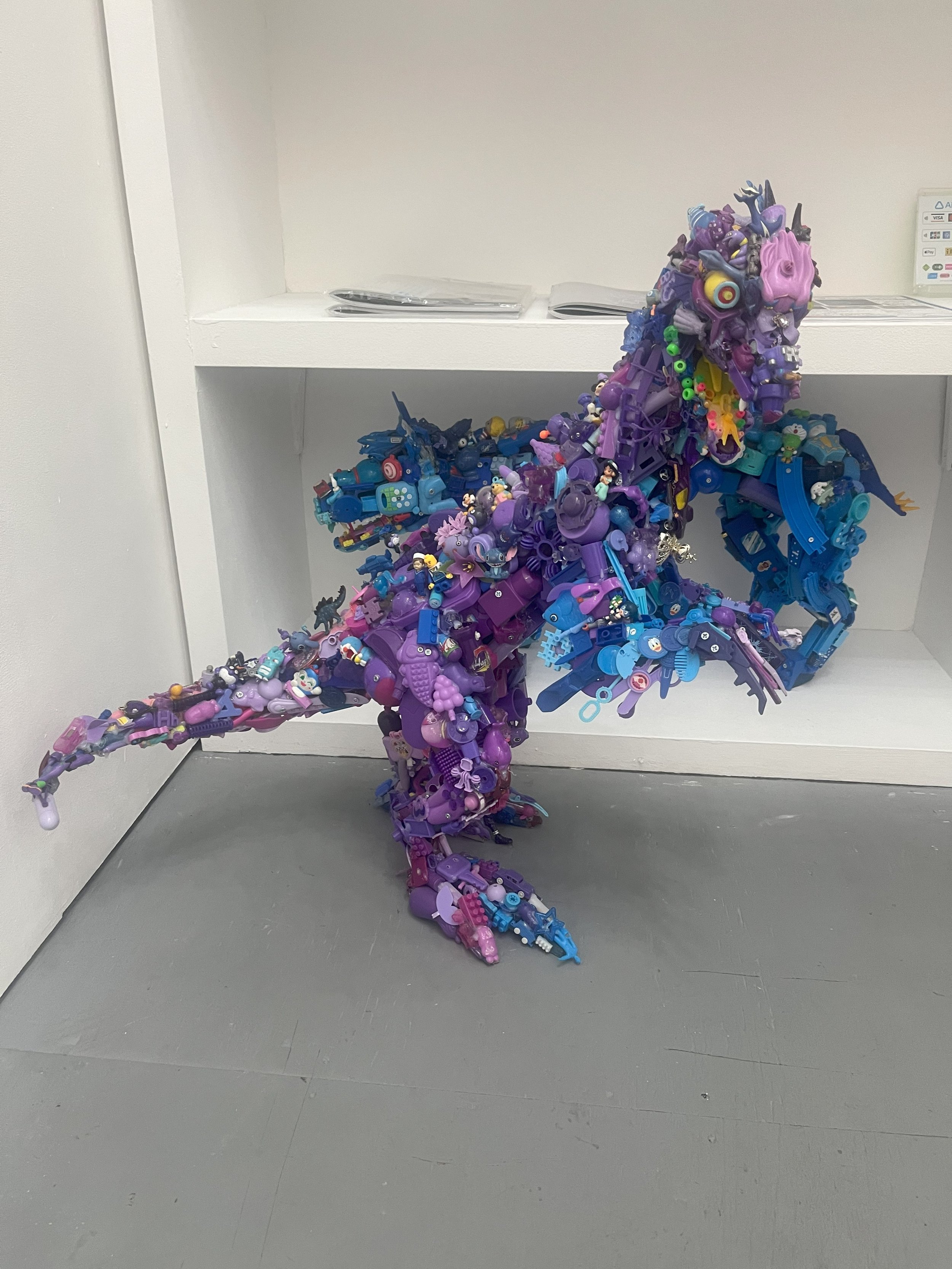Kyoto: Mori Yu Gallery
After seeing a few of the larger public galleries that Kyoto had to offer, we decided to go and visit some of the smaller commercial galleries in the area. One of these galleries was the Mori Yu Gallery, which aims to promote local emerging and establishing artists in the Kyoto area. On the day we went, there was a solo exhibition being held in the space. This show was Japanese artist Aki Lumi’s trace panic.
Aki Lumi’s trace panic works in the space.
Aki Lumi’s body of work features a predominantly gold and blue colour palette, using mixed media processes to create these large-scale, geometric works. Lumi utilises architectural drawings and layering processes to explore the connection between humans and the architecture which inhabits our world as we know it today.
I quite enjoyed Lumi’s use of traditional media to construct these architectural artworks, such as paint, gouache, ink and kraft paper which I felt further exemplified the connection between humans and the modern constructed world, especially in an age where architectural drawing skills are too often being replaced or substituted with technology and digital programs. The painting above, (I wish I got the name of this one!) intrigued me the most, mainly due to its wispily drawn figure with bulging eyes still remaining heavily visible despite the bold geometric shapes which make up the foreground of the work. I personally read the work as how humans have created a world which is approaching self-sufficiency on technology, thus resulting in humans becoming less purposeful in the future.
On the second level of the gallery, I found this little sculptural work near the artist portfolios, which is most likely a work of someone elses. I found it pretty facinating to look at, as this sculpture is made from old plastic toys and nick-knacks, repurposing them into a whole, colour coordinated art piece! The amount of detail in this little sculpture is absolutely insane- it makes me wonder if the work was completely planned out and configured, or just a spontaneous collage of three dimensional items.
Overall, I enjoyed my time in the Mori Yu Gallery, as it was quite refreshing to attend some of Kyoto’s smaller commercial galleries to see how emerging and established local artists exhibit their work in their city. I also really enjoyed the quietness and simplicity of the space, which definitely contrasts against Japan’s bustling and busy cities and impressive architecture. It was also nice to engage in viewing local artists’ work such as Aki Lumi, which manage to find a nice middle ground between exploring contemporary social issues/questions whilst maintaining traditional practices. This is something I greatly admire as to someone who uses minimal technology in my practice, as I prefer mediums, techniques and processes which are hands on and allow me to ‘feel’ and ‘touch’ and artwork whilst creating it.
This visit made me realise that Japan and Australia share very similar characteristics when it comes to exhibiting art. They have large, public galleries which showcase frontrunning, worldwide artists, as well as smaller commercial and artist run initiatives which aim to provide local artists with opportunity.



